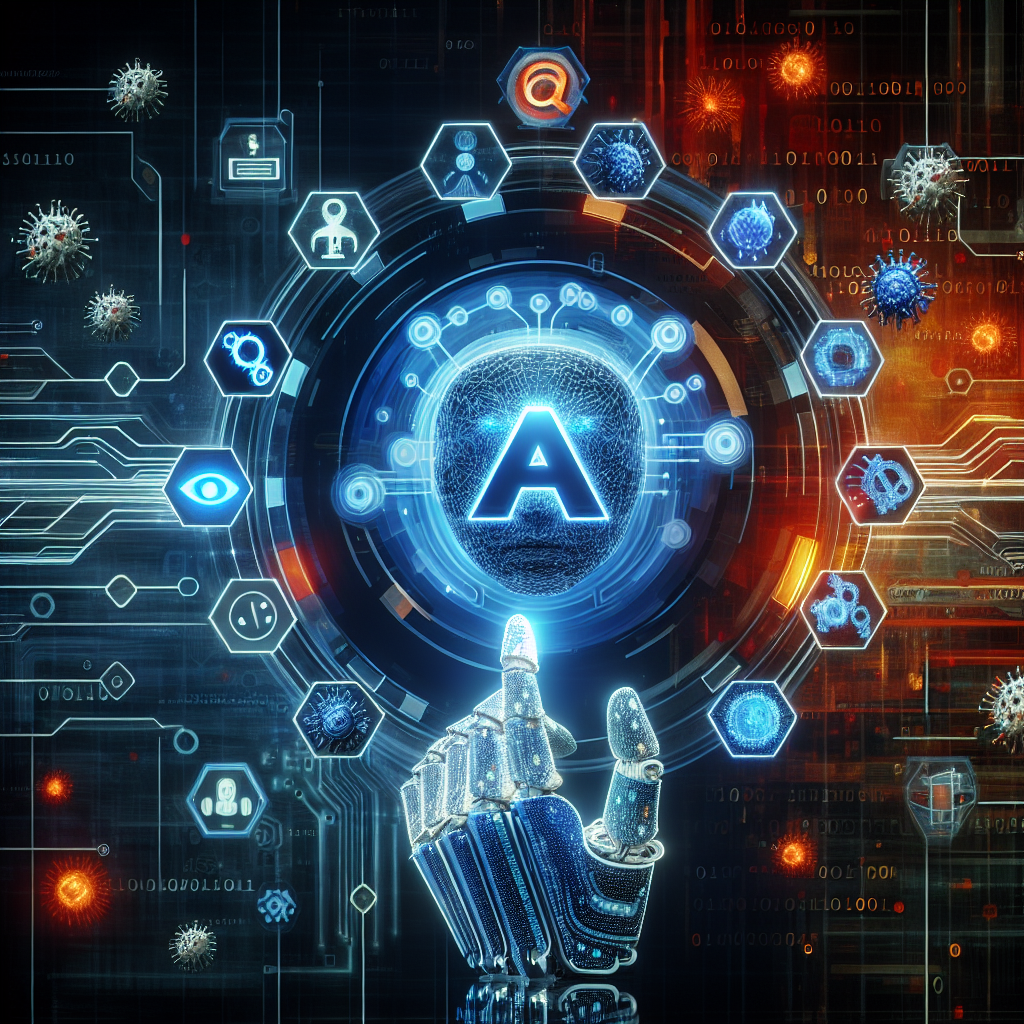As technology continues to advance at a rapid pace, so do the threats to our digital security. With the rise of artificial intelligence (AI) in cybersecurity, we are seeing both new opportunities and challenges in protecting our data from malicious actors. AI-powered cybersecurity is becoming more prevalent as organizations seek to stay ahead of cyber threats, but with this new technology comes a whole new set of risks.
AI-powered cybersecurity refers to the use of artificial intelligence and machine learning algorithms to enhance the capabilities of traditional cybersecurity measures. By using AI, organizations can better detect and respond to threats in real-time, automate security processes, and analyze vast amounts of data to identify patterns and anomalies that may indicate a potential breach.
However, while AI has the potential to greatly improve cybersecurity efforts, it also presents new challenges and risks. Malicious actors are increasingly using AI technologies to their advantage, creating more sophisticated and targeted attacks that are harder to detect and defend against. As AI-powered cybersecurity continues to evolve, it is important for organizations to stay informed about the emerging threats and best practices for protecting their data.
Emerging Threats in AI-Powered Cybersecurity
1. AI-Powered Malware: Malware powered by artificial intelligence is becoming more sophisticated and difficult to detect. These types of malware can adapt and evolve over time, making them harder to identify and remove from systems. AI-powered malware can also learn from past attacks and adjust their tactics to avoid detection by security measures.
2. AI-Powered Phishing Attacks: Phishing attacks are a common method used by cybercriminals to steal sensitive information from individuals and organizations. With the help of AI, these attacks can be more personalized and convincing, making it harder for users to discern legitimate emails from phishing attempts. AI-powered phishing attacks can also be more targeted, using information gathered from social media and other sources to craft more convincing messages.
3. AI-Powered Deepfakes: Deepfake technology uses AI algorithms to create realistic videos and images that manipulate or fabricate content. These deepfake videos can be used for malicious purposes, such as spreading false information or impersonating individuals in order to gain access to sensitive data. As deepfake technology continues to improve, it presents a significant threat to cybersecurity efforts.
4. AI-Powered DDoS Attacks: Distributed Denial of Service (DDoS) attacks involve overwhelming a target server or network with a flood of traffic, causing it to become unavailable to legitimate users. With the help of AI, these attacks can be more targeted and coordinated, making them harder to mitigate. AI-powered DDoS attacks can also adapt in real-time to security measures, making them more difficult to defend against.
5. AI-Powered Social Engineering Attacks: Social engineering attacks involve manipulating individuals into divulging sensitive information or taking actions that compromise security. With the help of AI, these attacks can be more personalized and convincing, making it harder for individuals to recognize and resist them. AI-powered social engineering attacks can also use information gathered from social media and other sources to craft more convincing messages.
Best Practices for AI-Powered Cybersecurity
1. Invest in AI-Powered Security Solutions: To stay ahead of emerging threats in AI-powered cybersecurity, organizations should invest in AI-powered security solutions that can detect and respond to threats in real-time. These solutions can automate security processes, analyze vast amounts of data, and identify patterns and anomalies that may indicate a potential breach.
2. Train Employees on Cybersecurity Best Practices: Human error is a common cause of cybersecurity breaches, so it is important for organizations to train employees on cybersecurity best practices. This includes recognizing phishing emails, using strong passwords, and following security protocols when accessing sensitive data.
3. Implement Multi-Factor Authentication: Multi-factor authentication adds an extra layer of security to systems by requiring users to provide more than one form of verification before gaining access. This can help prevent unauthorized access to sensitive data and mitigate the risk of AI-powered attacks.
4. Monitor and Analyze Network Traffic: By monitoring and analyzing network traffic, organizations can identify suspicious activity and potential threats in real-time. This can help detect AI-powered attacks before they cause significant damage and allow for a quick response to mitigate the risk.
5. Stay Informed about Emerging Threats: Cyber threats are constantly evolving, so it is important for organizations to stay informed about emerging threats in AI-powered cybersecurity. This includes keeping up to date on the latest trends, vulnerabilities, and best practices for protecting data from malicious actors.
FAQs
Q: What is AI-powered cybersecurity?
A: AI-powered cybersecurity refers to the use of artificial intelligence and machine learning algorithms to enhance traditional cybersecurity measures. By using AI, organizations can better detect and respond to threats in real-time, automate security processes, and analyze vast amounts of data to identify patterns and anomalies that may indicate a potential breach.
Q: What are some emerging threats in AI-powered cybersecurity?
A: Some emerging threats in AI-powered cybersecurity include AI-powered malware, phishing attacks, deepfakes, DDoS attacks, and social engineering attacks. These threats are becoming more sophisticated and targeted, making them harder to detect and defend against.
Q: How can organizations protect against AI-powered cyber threats?
A: To protect against AI-powered cyber threats, organizations should invest in AI-powered security solutions, train employees on cybersecurity best practices, implement multi-factor authentication, monitor and analyze network traffic, and stay informed about emerging threats in AI-powered cybersecurity.
Q: What are some best practices for AI-powered cybersecurity?
A: Some best practices for AI-powered cybersecurity include investing in AI-powered security solutions, training employees on cybersecurity best practices, implementing multi-factor authentication, monitoring and analyzing network traffic, and staying informed about emerging threats.
In conclusion, AI-powered cybersecurity offers many benefits in enhancing security measures, but it also presents new challenges and risks. By staying informed about emerging threats, investing in AI-powered security solutions, and implementing best practices for cybersecurity, organizations can better protect their data from malicious actors. It is important for organizations to continue to evolve their cybersecurity efforts to stay ahead of the ever-changing landscape of cyber threats.

